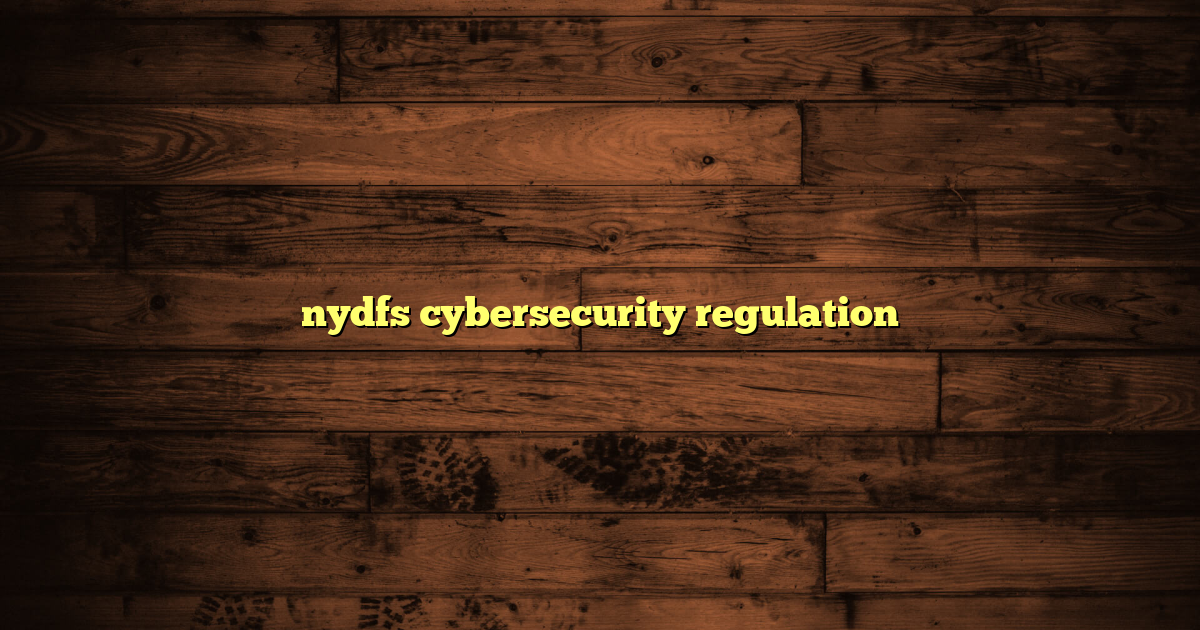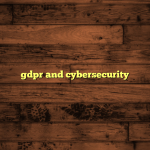nydfs cybersecurity regulation
Table of Contents:
- What Is the NYDFS Cybersecurity Regulation?
- Who Does It Apply To?
- Key Requirements Under The Regulation
- Why Was The Regulation Created?
- Recent Amendments And Future Outlook
- FAQ
NYDFS Cybersecurity Regulation: A Comprehensive Guide
Did you know that cyberattacks are on the rise, posing a serious danger to financial firms? The New York Department of Financial Services (NYDFS) Cybersecurity Regulation is a set of rules intended to shield financial service companies, as well as other regulated entities, from the growing peril of cyberattacks. This regulation, first introduced on March 1, 2017, has undergone changes, most recently in late 2023 and continuing into 2024. It is viewed as one of the most thorough cybersecurity frameworks in the United States for financial institutions.
What Is the NYDFS Cybersecurity Regulation?
At its heart, the NYDFS Cybersecurity Regulation demands that covered entities, like banks, insurance providers, mortgage brokers, money transmitters, but also other financial service providers that the NYDFS regulates, establish dependable cybersecurity programs. These programs should be made to keep sensitive customer information safe and to keep business running smoothly when cyberattacks happen. It orders that these organizations carefully look at what dangers they face from cyberattacks. Based on this evaluation, they need to come up with detailed strategies to deal with those dangers effectively. This means putting in place rules for data protection, plans for what to do if a cyberattack or breach happens, training workers on how to stay safe online, running system tests such as trying to break into systems or find weaknesses, in addition to planning for how to keep business going.
Who Does It Apply To?
The regulation has a wide reach, covering many kinds of organizations that the NYDFS oversees. This includes:
- Banks
- Insurance companies
- Mortgage lenders and brokers
- Money transmitters
- Check cashers
- Trust companies
With recent changes that took effect on November 1st, 2024, some sections are being introduced throughout 2025. The regulation now distinguishes between organizations based on how big they are or how they are classified. For example:
- Class A Companies – Larger companies encounter extra demands because of their size and the possible effect they have on the entire system.
- Small Businesses – Some smaller organizations don’t have to follow every part of the rules, but they still must have standard safety measures in place.
This staged approach helps make sure the regulatory load is fair while making sure that all organizations have robust security measures in place.
Key Requirements Under The Regulation
How can you assess and manage risks effectively?
Covered entities need to continuously assess risks. It involves finding weak spots inside the company and outside risks, like hacking attempts and insider threats. The intention is not just to find dangers, but to actively handle them by using safety measures that fit each company’s setting.
Written Cybersecurity Program
Every organization is obligated to have a formal, documented cybersecurity program that senior management or board members have okayed. This program describes how the organization will meet the requirements of the rules, covering technical protections like firewalls and encryption, as well as management steps like worker training schedules.
Incident Response & Reporting
It is important to have a plan for what to do if something goes wrong, so if a breach happens, or even if there is just suspicious activity, it is possible to quickly stop it and fix it with minimal harm.
Moreover:
- Covered entities must inform the NYDFS within 72 hours after deciding that a cybersecurity event that needs to be reported has taken place.
This need to report quickly allows regulators to stay up to date on new dangers that are affecting the finances of New York.
Employee Training & Awareness
Human mistake is still a big reason why cyberattacks are successful. It is important to have routine training sessions.
Workers learn how to find tricky emails or social engineering ways to steal logins, these simple steps greatly reduce the danger over time.
Encryption Standards
Data encryption, both when it is not being used (saved data) and when it is moving (data going across networks), is a must if it can be done. This makes sure that unauthorized people will not be able to easily get to private information, even if they break into the security system.
Encryption standards have been updated, because the rules have been changed to represent new cryptographic technology. This makes sure that the safety measures will be better in the future.
Third-party Service Provider Oversight
A lot of financial companies depend on outside vendors for different things, such as cloud hosting and payment processing. This opens the door for new weak spots that the company cannot directly control.
The NYDFS demands that covered entities have ways to keep an eye on these vendors, guaranteeing that they also follow the minimum cybersecurity rules that match the internal rules set by the regulated companies themselves.
Why Was The Regulation Created?
Back when it was first presented in early 2017 when Andrew Cuomo was governor, people were starting to worry about how open New York’s large finance sector was becoming, as cybercrime rates were growing worldwide. Financial organizations hold a lot of private consumer data and critical infrastructure that is used for payments. This makes them ideal targets for hackers who want to steal information or disrupt the system. The DFS saw that the old compliance methods were not doing enough to proactively stop modern, complicated attacks involving ransomware groups or nation-state hackers trying to hurt the economy directly. This gave rise to this ground-breaking set of rules, which requires constant watchfulness instead of just patching things up after a breach happens. It is a change towards making security an integral part of day-to-day operations, rather than treating it like something extra that IT does.
Recent Amendments And Future Outlook
In November 2023, big changes were introduced, which set new deadlines starting in December 2023 and going through late 2024 and early 2025. These changes address new difficulties, like the risks that come with artificial intelligence, better corporate expectations when it comes to cybersecurity accountability, more thorough system testing rules, like penetration tests, also expanded employee training content that covers the changing dangers. These changes represent the fact that cyberthreats are evolving quickly, so rules also need to be updated frequently.
This helps ensure the defenses do not become outdated quickly. If we look ahead to the middle of the decade, it seems likely that there will be greater emphasis on supply chain security because of growing reliance on third parties, but also more importance placed on real-time monitoring tools, using AI tools responsibly, without creating new weak points themselves.
In short: The NYDFS Cybersecurity Regulation stands out since it clearly states what is expected when it comes to protecting consumer data in one of America’s biggest financial centers, while it drives organizations toward using mature risk management practices rather than simply following the rules. It covers everything from how the company is run to technical measures like encryption and human aspects through ongoing staff education. It is all backed by obligations to quickly report events. Regulators are kept informed during crises. With recent changes that add additional safeguards to combat AI risks, the framework remains adaptable, adjusting to changing digital threat situations, making it important reading, not just for companies that are in New York, but for anyone who is interested in dependable fintech security.
FAQ
What types of businesses are required to comply with the NYDFS Cybersecurity Regulation?
Banks, insurance providers, mortgage companies, money transmitters, as well as other financial firms supervised by NYDFS, are required to comply.
What is the deadline for compliance with the latest amendments to the NYDFS Cybersecurity Regulation?
The deadlines vary, with some provisions effective immediately and others being rolled out through 2025.
How often should cybersecurity risk assessments be conducted?
Cybersecurity risk assessments should be conducted on an ongoing basis to identify internal weak points and external dangers.
What are the reporting requirements for cybersecurity incidents?
Covered entities must notify NYDFS within 72 hours after determining that a reportable cybersecurity event has taken place.
Resources & References:
- https://www.dfs.ny.gov/industry_guidance/cybersecurity
- https://ogletree.com/insights-resources/blog-posts/new-york-state-cybersecurity-regulations-take-effect-on-november-1-2024/
- https://www.pillsburylaw.com/en/news-and-insights/new-york-department-financial-services-cybersecurity-regulation-requirements-effective-november-1-2024.html
- https://www.dfs.ny.gov/industry-guidance/industry-letters/il20241016-cyber-risks-ai-and-strategies-combat-related-risks
- https://sprinto.com/blog/nydfs-cybersecurity-regulation/





